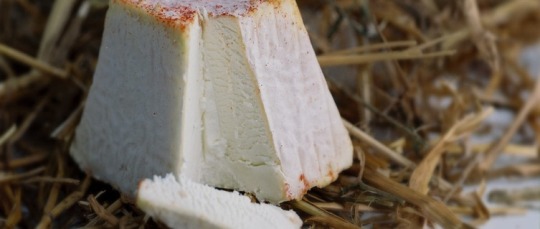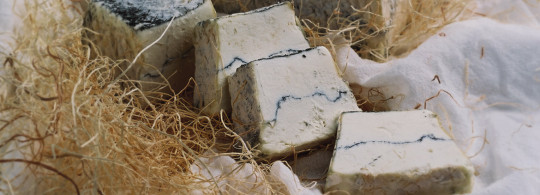Midwest Focus: Capriole Goat Cheese

Capriole goat cheeses
are made in Greenville, Indiana, close to the Kentucky border. Owner Judy Schad
is considered to be one of the godmothers of the artisan cheese movement in the
United States. Schad, along with the help of plant manager Chris Osborne,
produces cheese on the same land as owned by Schad’s family since the late 19th
century. In celebration of warmer Midwest weather, we have chosen to highlight
a few Capriole specialties that are perfect for summer picnics and
gatherings.
Piper’s Pyramide

Named
after Schad’s redheaded granddaughter, Piper, this velvety, fudgy goat’s milk
cheese has a dusting of bright red paprika under its white rind. As it ages, the
subcutaneous paste begins to soften and ooze. Don’t worry if you see occasional
spots of blue-green mold, but educate your customers and friends of its natural
evolution. Its flavor is refreshing and lactic, slightly sweet and buttery,
with a musty finish. A couple of Zuercher staff members have compared Piper’s
Pyramide to “ice cream.”
Pair
Piper’s Pyramide with medium-bodied whites with balanced acidity (Sauvignon
Blanc-Chardonnay blends, for example.) If you go red, go light: Gamay-based reds with soft tannins play along
nicely. Hefeweizen or other hazy wheat beers, however, may be the best match of
all.
Wabash Cannonball

Just as this
cheese shares its name with a classic folk song, this new American classic
cheese holds its own alongside its European cousins. Capriole uses Geotrichum
candidum mold on its rind, and is responsible for the “brainy” appearance that
forms on the rind of many cheeses of this style. The cheese is aged for
approximately three weeks, but the underlying ash and wrinkling can been seen
more readily around five weeks. Judy Schad has a sense of humor about her aging
belle:
The
Cannonball is one of our lovely, luscious ladies of spring. She’s been around
for 20 years, proof that the wrinkles can be sexy! You won’t find this elegant
little lady on every street corner. She requires a lot of lovin’, reacts
most unfavorably when ignored, and performs best when treated with a little
sweet talk and glass of crisp, white wine! All her admirers will tell you she’s
worth it.
The texture of
this small golf ball-sized goat’s milk gem is delicately flaky. Its flavor is
lemony and earthy, which intensifies with age. Towards the end of its life, the
Cannonball can take on a life of its own, so heed Judy’s advice, and don’t
ignore its care.
As mentioned, a
crisp white wine would pair well (Chenin Blanc is a classic match.) If beer is
your thing, try Wabash Cannonball with a Kölsch lager. The malty sweetness
offers a contrast to the tang, and the earthiness from the hops supports the
earthiness in the rind.
Sofia

It’s no mystery as to why this cheese took 1st
Place in its goat’s milk category at the American Cheese Society competition in
2014. Sofia is hand-ladled
into brick-shaped molds. The cheese is marbled with ash, adding to its
aesthetic qualities while paying homage to the classic cheesemaking technique
of separating and protecting morning and evening milkings. The texture is fine
and silky in the mouth, becoming more dense and velvety with age. It ripens
under a light, wrinkly Geotrichum
candidum rind, and has a delicate flavor reminiscent of sweet cream. You
might notice more of a salty, tangy finish as it lingers on your tongue.
Sofia pairs well with sparkling wines. I
prefer a Blanc de Blanc with this cheese, but a crisp Cava or Prosecco would
work well, too. When the cheese has a bit more age, try Sofia with a Moscato
d’Asti or Sauternes. Serve alongside fresh summer fruits drizzled with honey
for a decadent, but simple dessert course.

